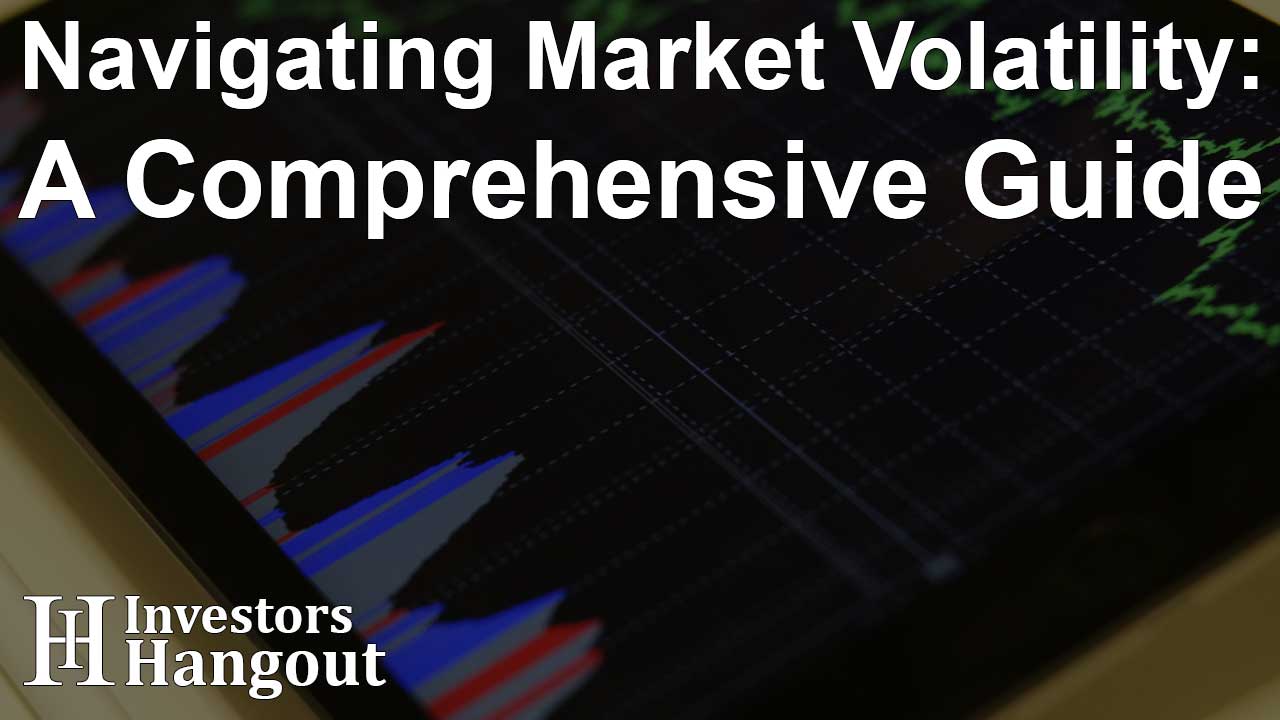Navigating Market Volatility: A Comprehensive Guide

Understanding Market Volatility
What Is Market Volatility?
Market volatility refers to fluctuations in trading prices over a specific period. It is measured using statistical tools like standard deviation and beta. Higher standard deviation indicates wide price variations and uncertainty, while lower values suggest price stability.
The VIX index, known as the "fear gauge," measures expected volatility. A high VIX signals market anxiety and anticipated price swings, while a low VIX reflects calm market conditions.
Volatility offers short-term traders profit opportunities and helps long-term investors construct diversified portfolios to mitigate risk. It mirrors economic indicators, geopolitical events, and investor sentiment.
Causes of Market Volatility
Various factors contribute to market volatility, often intertwining to create unpredictable price changes:
- Economic Data Releases: Reports on employment, GDP, or inflation trigger immediate market reactions.
- Geopolitical Events: Elections, conflicts, or policy shifts create uncertainty, driving rapid changes in investment strategies.
- Market Sentiment: Emotional responses amplify price swings.
- Liquidity: Low trading activity leads to exaggerated price changes.
- Speculation: Large speculative trades can create abrupt market shifts.
Recognizing these causes allows better navigation of volatile markets.
Key Economic Indicators and Their Influence on Volatility
The Role of Economic Indicators
Economic indicators provide insights into the economy’s health, influencing market sentiment and volatility. Important metrics include:
- GDP Growth: Declines may signal recessions, prompting sell-offs.
- Unemployment Rates: Rising unemployment impacts consumer spending and corporate profits.
- Inflation Data: High inflation often leads to interest rate hikes, affecting market stability.
- Leading Indicators: Metrics like manufacturing output and consumer confidence forecast potential economic shifts.
Monitoring these indicators helps anticipate market movements and mitigate risks.
Investor Psychology and Market Volatility
The Emotional Side of Investing
Investor emotions heavily influence market volatility, often overshadowing fundamental data. Fear and greed lead to irrational decisions, driving price fluctuations.
- Herd Behavior: Investors follow others, causing price overshooting or undershooting.
- Loss Aversion: Fear of losses outweighs the joy of gains, leading to poor decisions.
- Overconfidence: Overestimating predictive abilities results in excessive risk-taking.
Understanding these psychological pitfalls aids in making rational decisions during volatile periods.
Historical Examples of Market Volatility
Lessons from the Past
Historical events highlight the impact of volatility on investors:
- 2008 Financial Crisis: The S&P 500 lost over 50%, driven by the housing market collapse and panic selling.
- Dot-Com Bubble (1990s): Speculative investments caused the NASDAQ to crash nearly 80% by 2002.
- 1987 Black Monday: The Dow Jones dropped 22% in a single day due to program trading and panic.
Analyzing these events underscores the importance of understanding market dynamics and investor sentiment.
Measuring Market Volatility
Tools for Analyzing Volatility
Various metrics help assess market volatility:
- Standard Deviation: Measures asset return dispersion, indicating price uncertainty.
- Beta: Compares an asset’s volatility to the overall market.
- VIX Index: Reflects market expectations for future volatility, providing insight into investor sentiment.
Types of Market Volatility
Understanding different types of volatility helps refine investment strategies:
- Intraday Volatility: Fluctuations within a trading day.
- Long-Term Volatility: Trends spanning months or years, useful for evaluating asset stability.
- Implied Volatility: Derived from options markets, reflecting anticipated future price changes.
- Historical Volatility: Past price movement analysis to gauge risk and returns.
The Impact of Global Events on Volatility
Global Catalysts for Market Fluctuations
Global events often trigger sharp market changes:
- Geopolitical Tensions: Conflicts or instability lead to increased volatility.
- Economic Data Releases: Key reports can cause significant market reactions.
- Natural Disasters: Events like earthquakes or pandemics disrupt economies and markets.
Staying informed on global developments helps anticipate market reactions and make strategic decisions.
Risk Management Strategies for Volatile Markets
Effective Approaches to Risk Mitigation
Managing risk is crucial during market volatility:
- Assess Risk Tolerance: Understand your ability to endure price swings without reacting impulsively.
- Use Stop-Loss Orders: Set automatic sell points to limit losses.
- Adjust Portfolios Regularly: Align investments with market conditions and economic indicators.
- Position Sizing: Limit investment sizes based on volatility and personal risk tolerance.
Implementing these strategies enhances financial stability during market downturns.
Diversification Techniques to Reduce Risk
Strategies for a Resilient Portfolio
Diversification minimizes the impact of a single investment’s performance on your overall portfolio:
- Asset Allocation: Balance investments among stocks, bonds, real estate, and commodities.
- Sector Diversification: Spread investments across industries like technology, healthcare, and consumer goods.
- Geographic Diversification: Invest globally to mitigate risks tied to one region.
Diversification builds resilience and positions you for growth opportunities.
Long-Term vs. Short-Term Investing
Choosing the Right Strategy
Investors often choose between long-term and short-term approaches:
- Long-Term Investing: Involves holding assets for years, leveraging market growth trends. Historically, markets yield 7-10% annually, including inflation.
- Short-Term Investing: Focuses on quick gains through frequent trading. This approach requires precise timing and knowledge but involves higher risks.
Combining both strategies can balance risk and reward.
Tools for Monitoring Market Volatility
Essential Tools for Informed Decisions
Using tools to track volatility helps refine investment strategies:
- Volatility Index (VIX): Measures expected market volatility based on S&P 500 options.
- Bollinger Bands: Identifies price deviations from a moving average, signaling volatility.
- MACD: Highlights shifts in trend momentum and direction.
These tools provide insights into market conditions and aid in decision-making.
Building Resilience as an Investor
Staying Steady in Turbulent Markets
Resilience is key to navigating volatility effectively:
- Diversify: A well-balanced portfolio reduces risk.
- Focus on the Long Term: Markets historically recover over time.
- Maintain Emotional Discipline: Stick to a strategy and avoid impulsive decisions.
- Rebalance Regularly: Align investments with your goals and risk tolerance.
Resilient investors weather volatility and seize opportunities.
Conclusion
Market volatility is inevitable, but understanding its causes and effects empowers you to navigate it effectively. Use tools like the VIX index, diversify your portfolio, and balance long-term and short-term strategies. By staying informed and disciplined, you can steer through market fluctuations and build a strong financial future.
About The Author
Contact Hannah Lewis privately here. Or send an email with ATTN: Hannah Lewis as the subject to contact@investorshangout.com.
About Investors Hangout
Investors Hangout is a leading online stock forum for financial discussion and learning, offering a wide range of free tools and resources. It draws in traders of all levels, who exchange market knowledge, investigate trading tactics, and keep an eye on industry developments in real time. Featuring financial articles, stock message boards, quotes, charts, company profiles, and live news updates. Through cooperative learning and a wealth of informational resources, it helps users from novices creating their first portfolios to experts honing their techniques. Join Investors Hangout today: https://investorshangout.com/
